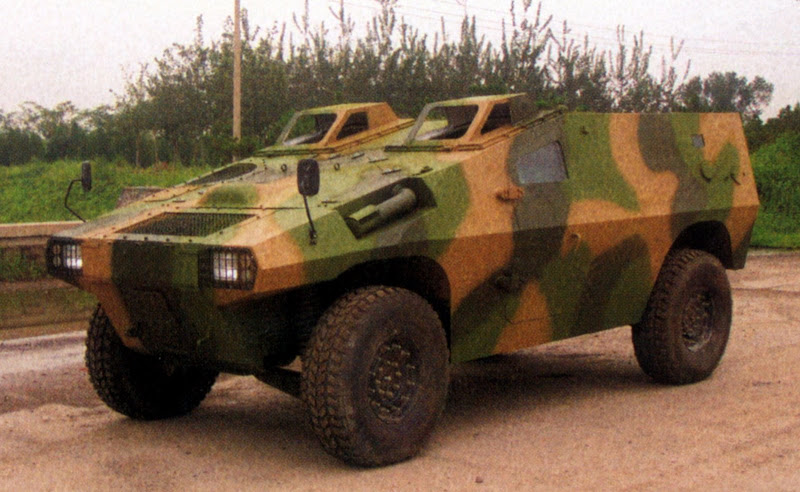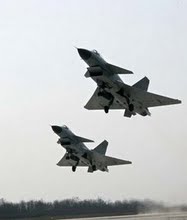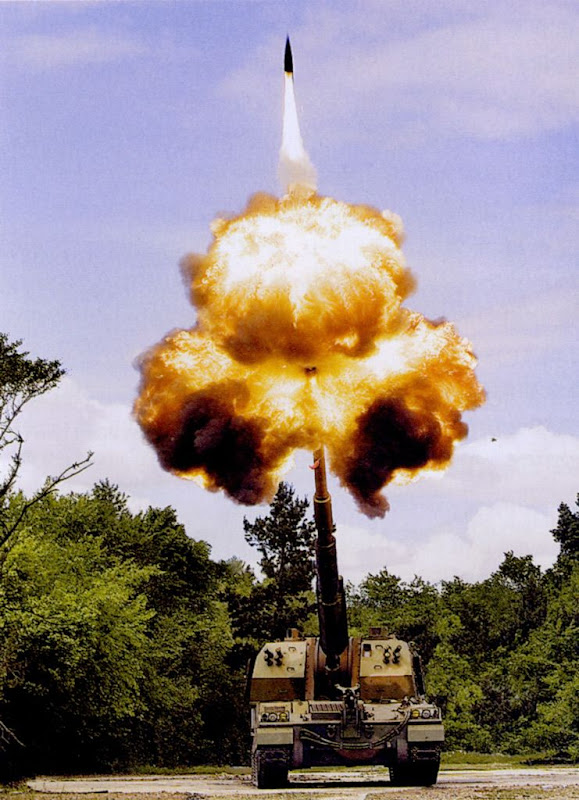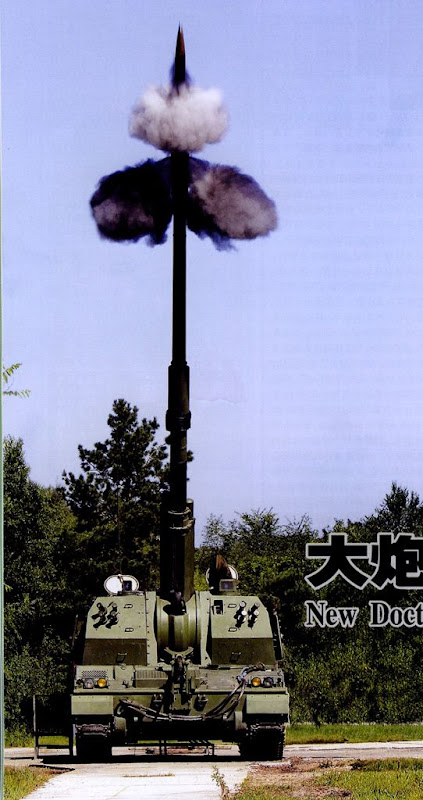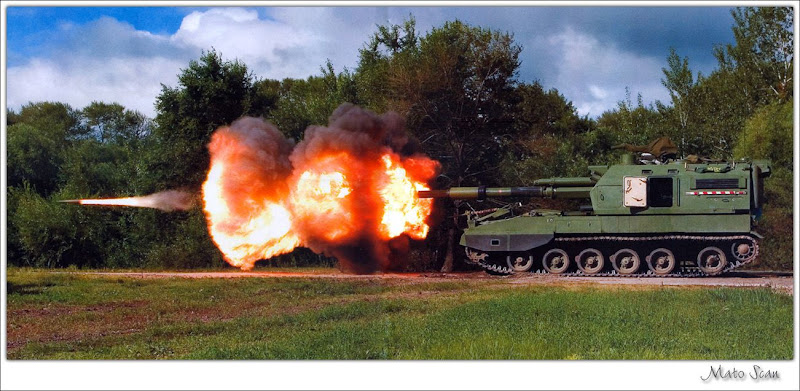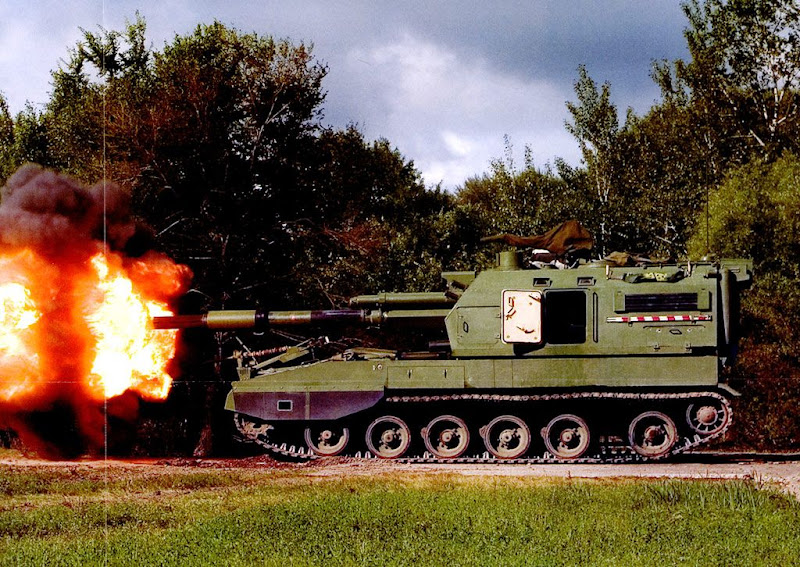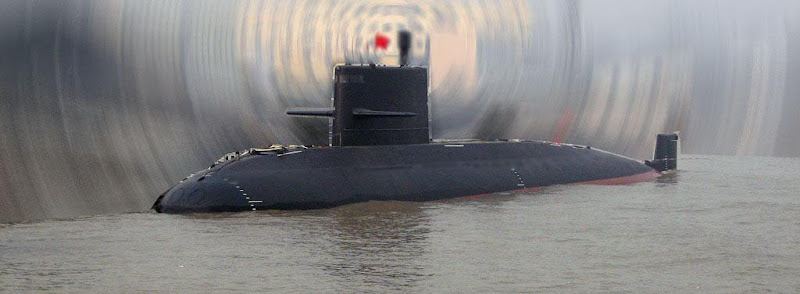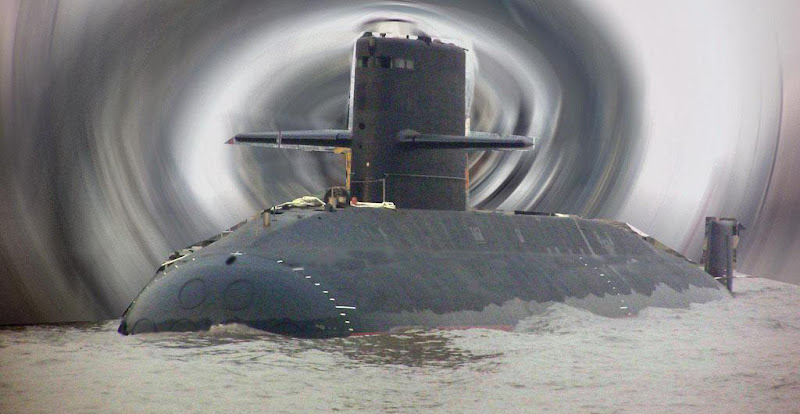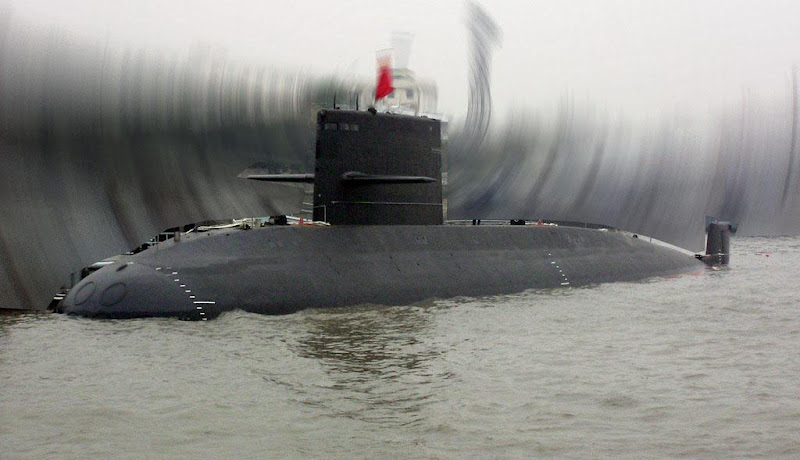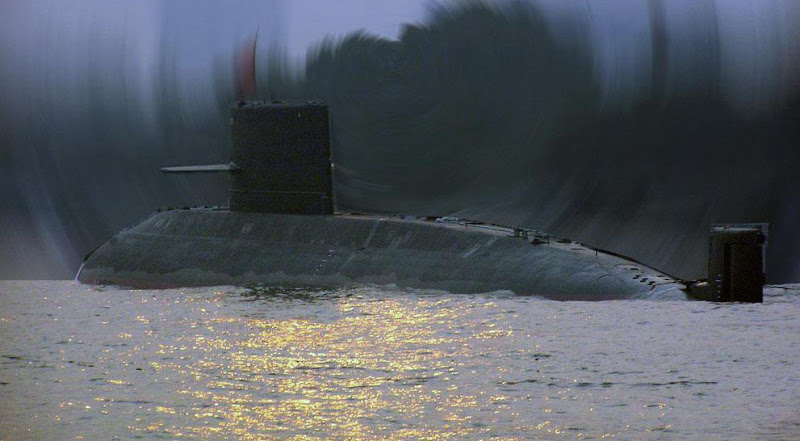Tuesday, September 23, 2008
Thursday, May 29, 2008
China launches 2nd Olympic weather satellite
TAIYUAN, May 27 -- China launched a second Olympic weather forecasting satellite, the Fengyun-3 (FY-3), Tuesday morning. The satellite was launched on a Long March-4C carrier rocket from the Taiyuan Satellite Launch Center in northern Shanxi Province at 11:02 a.m. (Beijing Time). It entered the preset orbit 27 minutes later. Gao Huoshan, general director of the FY-3 research team, said the satellite would send back images with the highest spatial resolution of 250 meters and its temperature sensitivity would reach 0.1 degree Fahrenheit. Both indices were close to the most advanced level of similar satellites in the world. The highest spatial resolution of existing satellites in China had been 1.1 kilometers, according to Gao. "The 250-m resolution images will be of vital significance for censoring global climate changes and possible subsequent natural disasters," said Gao. It would also contribute to key geographical data for the research on aviation, navigation, agriculture, forestry and oceanography, he added. The satellite was equipped with a dozen of advanced detectors such as the infrared scan actinograph and the microwave formatter. It is able to carry out a three-dimensional, all-weather, multi-spectrum quantitative detection to acquire data from the ground surface, the ocean and the space, according to sources with the China National Space Administration. Experts said the data collected by the satellite would not only facilitate weather forecast in China but also in other countries. China Meteorological Administration (CMA), in cooperation with Swedish meteorological authorities, had established a data collection terminal at the north pole to transmit data collected by the FY-3, according to an official with the National Satellite Meteorological Center (NSMC), which is affiliated with the CMA. The World Meteorological Organization had said it would use data offered by China's FY-3, Europe's METOP and U.S. NPOESS to detect changes of the atmosphere, the ocean and the ground surface, said the official. The 2,295-kilogram satellite will provide accurate and timely information about weather changes to facilitate more precise weather forecasts during the Beijing Olympic Games, said a CMA official earlier. The CMA official said the new satellite, with a bigger payload, would provide medium-range weather forecasts up to 10 to 15 days. Zheng Guoguang, director of the CMA, said the FY-3 would work with the existing FY-2 to ensure timely weather forecast during the Olympics. Both the satellite and the rocket are developed by the Shanghai Academy of Spaceflight Technology affiliated to the China Aerospace Science and Technology Corporation. The launch was the 106th mission of China's Long March series of rockets since April 24, 1970, when a Long March-1 rocket successfully sent China's first satellite Dongfanghong-1 into the space. China has launched eight meteorological satellites since research started in the 1970s. Its first Olympic weather forecasting satellite, the FY-2D, was launched towards the end of 2006. The CMA has identified weather forecast services for the Olympic Games as "a priority" for this year as the country may face much more frequent adverse weather. It has announced earlier that China will launch another 22 meteorological satellites by 2020, including four more from the Fengyun-2 series, 12 from the Fengyun-3 series and six from Fengyun-4 series.
Friday, May 16, 2008
Tuesday, April 15, 2008
My Analyzing Article: The Electromagnetic predicament of PLA
Key points: "Battle in Electromagnetic Spectrum" is different with "Electronic Warfare"
PLA admitted its great weakness in electronic warfare
"Battle in Electromagnetic Spectrum" has become the central context of PLA new training doctrine.
"Battle in Electromagnetic Spectrum" is not featured by the "asymmetrical" .
In the beginning of year 2007, PLA made a new military term "Battle in Electromagnetic Spectrum" as the center subject in the training and drills. Almost in all internal exercises in PLA, "Battle in Electromagnetic Spectrum" is always mentioned as the key word.
What is the meaning of so-called "Battle in Electromagnetic Spectrum"? Theoretically speaking, "Battle in Electromagnetic Spectrum" is very close to the "Electronic Warfare" in western military methods, but differences still exist.
Chinese military experts believes that the "Electromagnetic Spectrum" in modern battlefield covers the types of crowd Electromagnetic signal, from military system, civil system to natural background. Especially, the large scale using of electronic devices and system will bring serious disturbance in electromagnetic spectrum to severely depress the system performance, commanding control and combat maneuver.
PLA of course admitted that "Battle in Electromagnetic Spectrum" includes the fighting to deny the use of electromagnetic medium by an adversary from all available methods in electronic support, attacks and protection throughout land, marine, air and space battlefields.
But the military academies in PLA are totally different with western countries. Since the year of 1927, PLA’s military theories have been controlled by political reasons. Chairman Mao Zedong’s "People’s War" is a typical sample. It has made a sad truth that professional officers had to dispute how to fight under the theories of "People’s War" when in 1991 U.S. forces were playing Air-ground Joint Operation in Gulf War. Even in Iraq War, some PLA analyzers from "National Defense University" still believed that Iraq can defend U.S. for a while by so-called "People’s War".
Similarly, in early 1990s, building aircraft carrier also once made great disputation in PLA because carrier is usually considered as an "aggressive" weapon system by some CPC and PLA heads and can not be held by PLA, which was defined as a defensive force by CPC’s grand old leaders
So the "Battle in Electromagnetic Spectrum" is actually an instructional signal from CPC central military committee, the highest commanding organization of PLA, to emphasize the extreme importance of electronic warfare, which is the life-and-death counter action in the "Military Operation against Taiwan Independence" urged by President Hu Jintao.
But the first job of "Battle in Electromagnetic Spectrum" is to focus on how to support and protect PLA’s battlefield C4ISR network from the oppression stronger enemy. The main reason is, it is too early to talk about the electronic operational ability in PLA, which is just making its first step in electronic warfare.
Unlike western "Electronic Warfare", the "Battle in Electromagnetic Spectrum" from PLA firstly urges an electromagnetic compatibility management. PLA thinks that a scientific and strict management of electromagnetic compatibility is the first step before the "real Battle" in electromagnetic spectrum. On the contrary, the side without better electromagnetic compatibility will face its biggest enemy, not the hostile jamming but friendly wild signal flood. It means that PLA will probably automatically collapse into chaos by booming electronic devices before war breaking
Xue Aiguo, the chief staff of PLA Army 38th Group Heavy Mechanized Army, also once expressed in 2007 that how to battle in Electromagnetic spectrum is the biggest obstacle for a further uprising of PLA operational capacity.
Although PLA is studying how to fight under Electromagnetic environment, the battle in unseen Spectrum is still the greatest challenge for PLA.
In 2007, "Iron Fist-2007" was initiated in early year as the testing drill for evaluating the training under battle in Electromagnetic Spectrum. And the main role, well-known 54 Group Army 127th Mechanical Infantry Division, is the experimental unit to explore the new equipments joint training under complicated Electromagnetic environment.
In the news stories and photos about this drill, PLA still exposed some terrible weaknesses. Under the adversary electronic jamming, the commanding signal network was collapsed and many combatant units are out of control. The chief officers have to use civil cellular phones to call their supreme officers. The frequency-hopping radios have been delivered to levels of units years before but most of them are used more than one year and can not be operated correctly to defend the adversary jamming.
The shock of "Battle in Electromagnetic Spectrum" finally will bring revolution to the old training system of PLA armed forces.
Zhang Shude, a professor from PLA air-defense troop commanding college, pointed that the original training and support doctrine can not be used further for "Battle in Electromagnetic Spectrum". The distinguished disadvantages are described as "no electronic warfare system" "unreal Electromagnetic condition emulation" and "inadequate antagonism". More and more senior officers in PLA has waken up that PLA's training system is the first one required to be improved for adoption in electromagnetic context.
Being evaluated in PLA, the new generation training doctrine upgrade and is added much more content about "Battle in Electromagnetic Spectrum". In Army, Battlefield EM situation image determination and Trunking Communication Network construction are added for technological sergeants and officers. In Navy, surface and underwater main warships will carry the training of "first fire" and long-range anti-ship missile attacking under electronic counter measuring conditions. In Air Force, the aviation wings (divisions) drills the anti-radiation operations and air EM jamming programs. PLA's JH-7/A attacker squadrons have equipped electronic warfare pods. For the deterrence to enemy air assaulting, PLA Air Force wings have begun the training with land-bases radars. In Secondary Artillery, the missile launching brigades are learning to launch tactic or strategic ballistic missiles in the condition of commanding & communication signal under strong EM jamming.
Systematically, PLA new training doctrine for "Battle in Electromagnetic Spectrum" has three related parts. First one is theoretical knowledge education. PLA has understood that its conscripted soldiers in frontline are usually interior in education background, comparing with U.S. or other western recruited people. So PLA eyes the necessary electronic knowledge education as the precondition for relevant training.
Second one is the differentiated specialty training. It usually referred as the one electromagnetic support, attack or protection capacity, such as battlefield communication network construction, jamming, countermeasure, by tactical manipulating training with the related systems, for instance frequency-hopping radio, fire control radar, sonar, jamming pod and other electronic counter measuring systems.
The last one part is the integration or joint training. PLA think that future war or conflict is a systematical contends between integrated and joint military capacity. So the main task of this stage training is to seamlessly integrate all combat units and different combat forces to exert multipliable operational capacity in electromagnetic Spectrum.
As a result, PLA has noticed that to build an effective Electromagnetic Spectrum management has been the top task for peaceful time training and real wars. There are no informations about whether PLA has established its spectrum management organizations or process system. But in lots of background news stories, PLA senior officers and staffs are urged to learn identify the spectrum situation like map-reading, and to allocate frequencies as operation commanding. In fact, the spectrum management must depend on tools or software to assisting spectrum managers. PLA may have developed some kind of spectrum monitoring & interference analysis software or equipment for commanders' spectrum planning, coordination and control.
Although PLA is hastily building support network and crazily learning for electronic warfare, PLA's operational ability in Electromagnetic environment is very thoughtful to be evaluated. Obviously China has gap with U.S. in electronic industry and PLA is inexperienced in electronic warfare. Logically in wartime, the inferior side usually rather to be the anticipator, which to initiate the first strike. So some opinions are raised to extrude that PLA’s "Battle in Electromagnetic Spectrum" is "aggressive" and "asymmetrical" to bring Electromagnetic "Pearl Harbor" in future. But is it real?
Unlike some hard-kill "Sha Shoujian" (Killing Mace) weapon systems, such as new DF-41 ICBM and cruise missiles, the electronic warfare systems and their effect have just been acceptable and acknowledged in PLA. It can not be imagined that PLA presently has ability to organize a complicated Electromagnetic attack. Surely PLA has power to bring conventional blitzkrieg to destroy some key nodes of adversary electronic warfare network, but the recovery will certainly be speedy and counteract the attacking. Another option is the devastating electronic pulse weapon, which however is too far to be used in conventional war, unless PLA wants a nuclear disaster.
So the rising of "Battle in Electromagnetic Spectrum" someway shows the disenchantment in PLA system, from top to bottom. The electronic warfare is inevitable in PLA’s developing road when China is become more and more impatient on Taiwan Issue. It seems that PLA is so late to involve in this game, but PLA has been aware of it. When in Korea War, PLA brave soldiers whistled to organize attack under U.S.’s indiscriminate bombing. Now PLA did not want to be anther copy of Iraq army, it still needs steady troops and reliable commanding network when being under Americans’ electronic attack.
Friday, March 14, 2008
China opens 99A2 MBT to answer Japan new MBT

Just a week after Japan's New TK-X MBT unveiled, China official Internet news portal Xinhuanet (run by Xinhua News Agency) response Japan's behavior to release several images of PLA's latest Type 99A2 MBT.
In 2007, A Chinese magazine published a picture of so-called "Chinese Enhanced Third Generation MBT", which was actually only a technological testing platform based on Type 99 MBT hull. Now these new images clearly showed that the real face of "Enhanced MBT", or Type 99A2, which has been existed for 1-2 years and suffered the rough testing with PLA’s fresh 8*8 wheeled armor vehicle family around China’s inner land.
Unlike Type 99A1's space arrow shaped armor on turret front side, Type 99A2 turret has mounted with exteriorly changed arrow-shaped ERA armor and front hull is covered by flat ERA armor. Despite of the size of ERA armor, Type 99A2 seems to have a larger turret with an expanded tail chamber.
In addition of changed armor, the most distinguished feature is the never seen before Active Protection System (APS) mounted on Type 99A2 turret. Obviously, this device replaces original well-known Type 99 MBT's laser-countermeasure device and is not a simple Chinese copy of Russian "Arena" APS but is a whole new mushroomy system with some unknown antennas on it. Chinese resources indicated that millimeter-wave radar is possibly included in. But the actual working mode and hard-kill methods of Type 99A2 is still unclear.
The commander's periscope scope of Type 99A2 is greatly changed from the previous and looked very close to the appearance and size of the commander observation system of French AMX-56 Leclerc. Chinese resources said that the Type 99A2 in the image is still removed some systems for land testing.
The unseen changes also should be motioned. Type 99A2 almost kicks off previous power and driving system of Type 99 Chassis. Type 99A2 has "Integrated Propulsion System", which is a power module includes 1500HP transverse mounted engine, transmission, cooling system and fuel tank.
In the opened news, the testing staff introduced that the "Enhanced MBT" project has been finalized the design for 5 years and has entered testing for final approval. And it can be presumed that Type 99A2 MBT will enter service in 2009 for welcoming the 60th National Day of PRC birth. From all aspects, the improvement of Type 99A2 MBT is so great that it can be almost determinate as a new type of Main Battle Tank.
Comparing with ROK XK-2 and Japan KT-X, PLA Type 99A2 has its owned features and comparative performance. But the multiple testing conditions and terrains, like high plateau (Tibet), desert, frigid area, cannot be provided in ROK and Japan. And China's MBT exportation to other countries, such as Pakistan and Sudan, also brings rich experience on PLA's MBT development and manufacturing.
发表者
Johnathan Weng
位置在:
12:39 AM
1 评论
![]()
标签: main battle tank
Thursday, March 13, 2008
China VIPs congratulate the success of PLA KJ-2000 AWACS
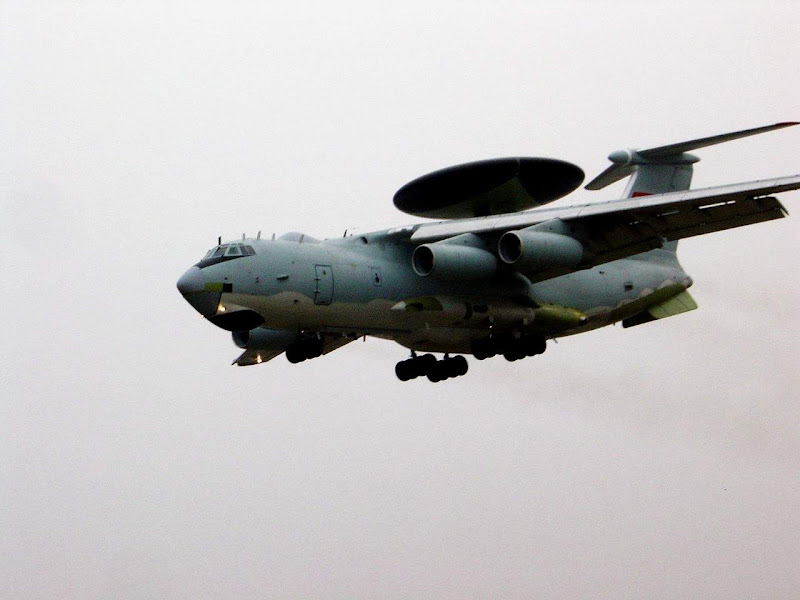
In the middle of February 2008, AVIC-I announced that its one strategic "Key Project" has been successfully and totally completed and the leaders of China and PLA, including President Hu, have send their warm congratulations to this Chinese largest Aviation Manufacture.
This piece of news appeared in the official paper media of Chinese Aviation Industry--"Chinese Aviation Daily", and then was transferred throughout Chinese main web news portals.
Of course, the "Key Project" is not clearly introduced in the opened news. But the salutation from Chinese Top leaders, 4 members of CPC central committee including President Hu Jintao, indicates that the so-called "Key Project" is an strategic aerial weapon system and has great value to PLA. Chinese Defense Minister Gen. Cao Gangchuan even expressed thanks for keeping the honor and dignity of China.
The answer is only one, "Key Project" is PLA C4ISR central role--KJ-2000 AWACS and the success shows that 4 KJ-2000s manufactured by AVIC-I have entered service in PLA Air Force in 2008.
In 2000, China once planned to purchase Israel Phalcon AWACS, but later the deal was terminated by United States. China always considered it as a great shame and initiated its own AWACS project.
Except the congratulations, some interesting truths can be investigated from the news.
In his written felicitate letter, Guo Boxiong, the deputy Chairman of CPC central military Committee, confirm the great achievements of AVIC-I but urged the pushes of later testing for technological maturity. Obviously, the words from General Guo show that PLA's AWACS still has problems although they have entered PLA.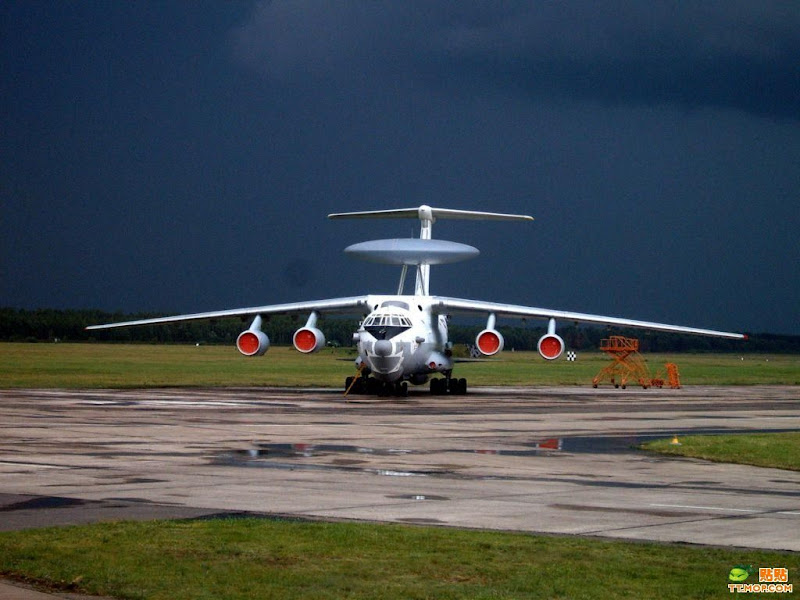
Cao Gangchuan also hoped that related manufactures shall especially focus the quality of system and simultaneously pursue the latest development in aerial early warning systems. His words also proved that the performance of KJ-2000 is not stable because of lots of new technologies involved.
Hong Kong Medias, like Phoenix TV and China Review Agency, quoted this news and added some new contents. It declared that KJ-2000 can detect F-22 in range of 200KM. AVIC-I has no comments on this performance describe but it is generally believed as a sensationalized propaganda.
Although PLA's KJ-2000 has unclear operational capacity and too limited number to be deployed in highly-dangerous area, the extinguished growth of PLA Air Force is need to be focused.
According to a imperfect statistics, now PLA has owned over 450 third generation fighters, including 11 Su-27/J-11/Su-30mkk/Su-30mk2 regiments (270+ fighters, with 24 fighters each regiment), 4 J-10 regiments (96+ J-10) and 4 JH-7/JH-7A regiments(96+ JH-7/A). With the support of KJ-2000 and other systems, PLA is going to grasp the air superiority over all Asian countries.
Thursday, February 28, 2008
Chinese peacekeepers in Sudan's Darfur
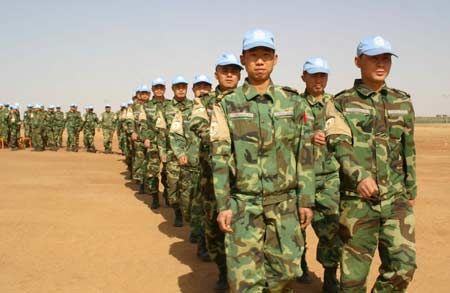
Members of Chinese peacekeeping engineering unit march at a camp in Nyala, capital of South Darfur State, Sudan, Feb. 26, 2008. The 135 vanguards of the Chinese engineering units arrived in the western Sudanese region of Darfur on Nov. 24, 2007 and have established a camp in Nyala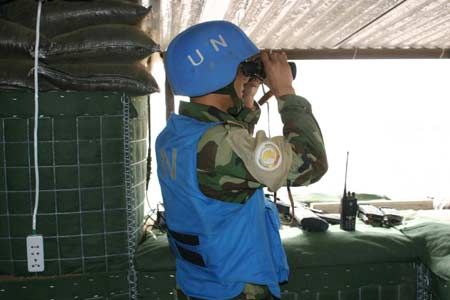
A members of Chinese peacekeeping engineering unit is on duty at a camp in Nyala, capital of South Darfur State, Sudan, Feb. 26, 2008.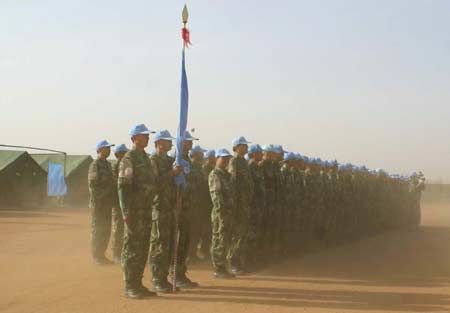
Members of Chinese peacekeeping engineering unit assemble at a camp in Nyala, capital of South Darfur State, Sudan, Feb. 26, 2008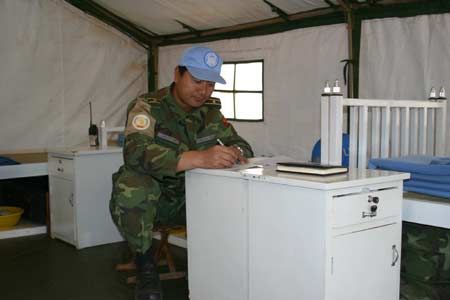
A members of Chinese peacekeeping engineering unit studies in his tent at a camp in Nyala, capital of South Darfur State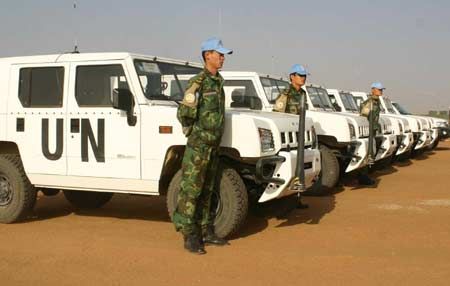
Members of Chinese peacekeeping engineering unit wait for orders beside vehicles at a camp in Nyala, capital of South Darfur State
发表者
Johnathan Weng
位置在:
1:06 AM
0
评论
![]()
标签: PLA peacekeep, UN
Wednesday, February 13, 2008
AVIC-I about to realize indigenous engines production for PLA Air Force
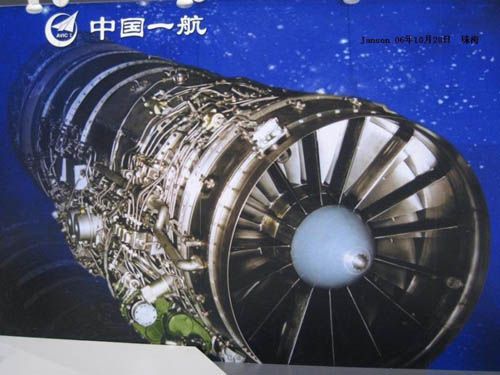
WS-10 Turbofan engine
Recently, AVIC-I announced that its "Taihang" (WS-10) has entered the mass production stage and been ready for being installed with PLA Air force main fighters, such as J-10 and J-11.
According to AVIC-I news resource, AVIC-I Shenyang Aero-engine Design & Research Institute (SEDRI), known as No.606 Institute, has resolved series of technological problems and the number of provided WS-10A engine, the production model, has reached the highest in history. "Taihang" Turbofan Engine has been finalized its prototype development and entered the batch production for PLA Air Force.
AVIC-I did not leash that what the exact kind of combat aircraft will use WS-10A. But it may be estimated that PLA Air Force's J-11B but not J-10 is the first user. J-10's rear fuselage is designed for installing with AL-31F turbofan engine, so WS-10A has to be decreased the maximum diameter for matching the size.
AVIC-I said that the SEDRI has achieved the sale of RMB 4.78 million (USD 66.4 million). Considering of the modern turbofan engine usually costs USD 2.7-3 millions, SEDRI almost provide 15-20 WS-10A engines for 7-8 J-11B dual-engine heavy air superiority fighters in last year. Certainly, future WS-10 manufacturing will be transferred to Liming Engine Corporation.
AVIC-I SEDRI also admitted that variants of WS-10 engine has been finished its design and solved relevant technical readiness. The most urgent one is the size modified and thrust enhanced WS-10, called as WS-10B for J-10 fighter and it has been granted testing approval successfully. AVIC-I SEDRI said that the WS-10B has been ready for Combat Aircraft Installation.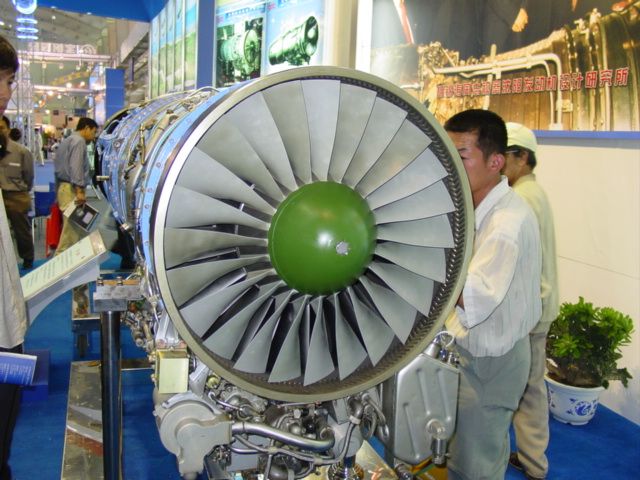
"Kunlun" Turbo Engine (WP-14)
SEDRI also introduced that "Kunlun" Turbo Engine (WP-14) improved model WP-14II has passed the technical examination and effectively ensure the delivery for new members of J-8II and J-7 family. China resource indicated that WP-14II’s maximum thrust has reached 8400 kg.
In addition, AVIC-I Xi'an Aero-engine (group) LTD finally was granted the production approval of "Qinling" WS-9 medium thrust turbofan engine, a copy of RR Spey MK202 imported for JH-7 fighter in 1970s. In 2005, WS-9 turbofan engine got its design approval after the project initiation in 1994.
Actually, PLA Air Force has been suffering from realizing Spey MK202 engine indigenous production for over 30 years. The success of WS-9 engine will greatly speed the deploying of more JH-7/JH-7A attackers. Comparing with original prototype engine, Xi'an Aero-engine (group) LTD has made modifications of new annular combustor, 4-stage fan, 10-stage high pressure Compressor and convergent—divergent nozzle.
Monday, January 28, 2008
China’s Type 59P MBT shows more details
In last year August’s IDEX2007, China Poly Corporation once displayed the so-called T-59P MBT model in public. 5 Months later, pictures showed that Type 59P MBT dose not only remain in concept stage but has been produced out real sample vehicle and entered testing.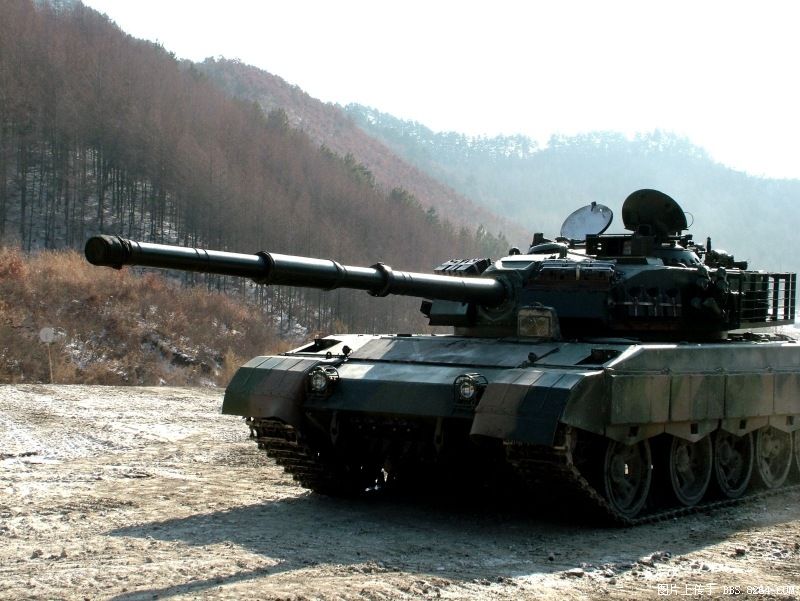
Some self-driving tourists pictured that the testing vehicle of Type 59P MBT in some area of North China.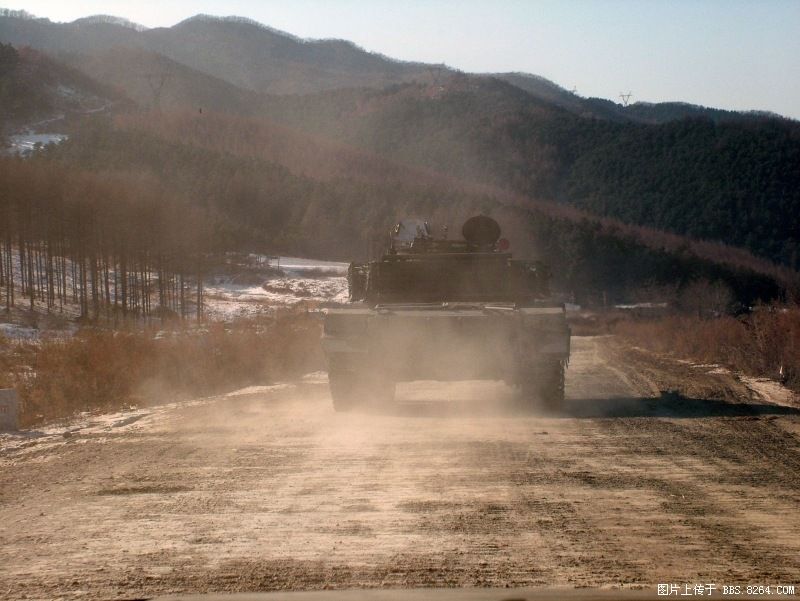
Obviously, from the 5 pairs of road-wheels, the vehicle is modified from previous Type 59 MBT family. A more convictive result is that the chassis is from NORICO’s AL ZARRAR MBT for Pakistan. China has said that Type 59P is for foreign customers, and using a mature and highly praised chassis is not a bad idea.
From opened information of Type 59P’s armament, it has a 105 mm rifled gun, which can be nearly verified by picture. Some resources believed that Type 59P would equipped with more powerful 120mm smoothbore gun, but this will limited the ammunition carried by the vehicle. After all, 105 mm gun has provided enough firepower in most battlefields, like in some losing states.
Strangely, the main gun has a steel annular device, which is just placed behind the bore evacuator. Now this ring set’s purpose is still unclear.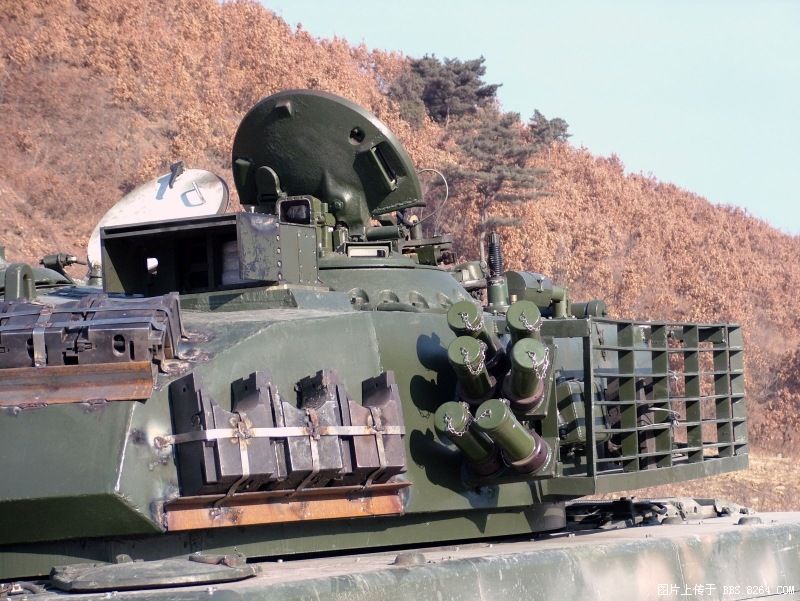
It is hard to identify that the tank turret is improved from original Type 59 cast dome-shaped turret, except the hatch girder circled with concave holes. Arrow-shaped armor has been melted on the frontispiece of turret, but the armor bulge’s shape has nuance with those installed on Type 96 and Type 99 MBTs.
The front and side faces of arrow-shaped armor are also attached with some wasted steel pieces. Obviously, those steel pieces are being loaded for turret Counter-balancing and later will be replaced with ERA in practical model.
As a whole, previous Type 59 turret has modified to a new appearance. In additional of front side armor, the dome-shaped turret flank sides is also covered by new armor layer, on which slat armor and smoke grenade launchers are installed.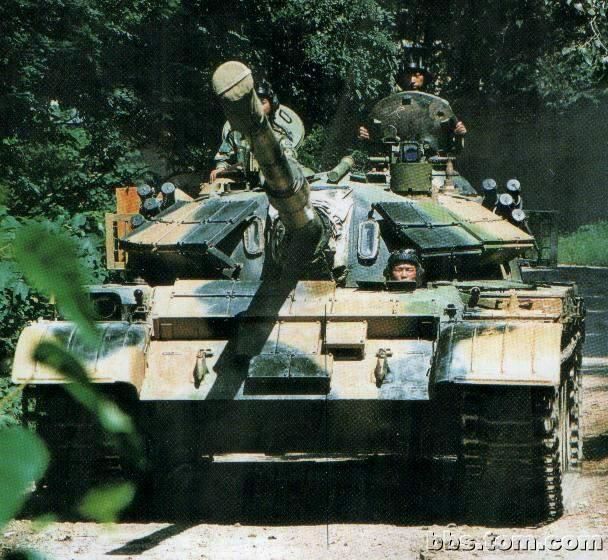
Unlike Type 59D’s observation and aiming system, Type 59P MBT’s “Sight system” is also almost similar to AL ZARRAR MBT. With upgrading protection, Type 59P MBT can be the ultimate variant of Type 59 family.
China is always seeking breakthrough in world weapon market, which is mainly occupied by U.S. Russia and Israel. Due to the quality and technological reasons, China’s weapon systems are usually inferior in hi-tech conflict. But in some unenlightened state conflicts and civil wars, cheap and easily manipulative Chinese weapons are still welcome.
In Sudan, Type 85-II MBT and other armed vehicles has been found; in Pakistan and Iran, Thunder Fighter and Missile craft are playing great roles. In future, large combat ship and tactic ballistic missile will be provided for buyers, who are the hidden allies of China.
发表者
Johnathan Weng
位置在:
8:01 AM
0
评论
![]()
标签: main battle tank
PLA’s training is in Transformation—new 8th generation training doctrine is considered in Chinese armed forces
At the end of 2007, "PLA Daily", the official paper media of PLA, announced that its new generation training doctrine is being studied to improve PLA operational performance in future hi-tech conflicts and wars.
The new training doctrine has one special part for Joint Combat Training and the other 7 parts for troops and serviced personnel from Army, Navy, Air Force, Secondary Artillery, Armed Police, Testing Support units and reserved armed forces.
Comparing with previous training programs, 5 new features can be found to outline PLA's drilling methods improvement.
Number one, training subjects related to non-war operation like peace-keeping are added.
Recently, more PLA soldiers are sent to oversea areas for UN tasks. In 2006, China has become the largest peace-keeping mission man-power provider in UN Security Council. Meanwhile, the dispatched PLA units are facing more impacting missions than mine-sweeping before. A changing situation urges PLA to add tactical training programs for close combat and anti-riot operations.
Number two, joint combat training is being paid with more attentions by PLA.
PLA always has less experience in joint operation except some three forces joint combats for liberating literal islands in 1950s. But PLA still has no correspondent programs for joint combat training in the most time of PLA's 80 years history, even in 21st century.
PLA’s great disadvantage in joint combat has been a killing limitation for years. The ignorance on joint combat training partially based on PLA’s in-rooted “Great Army” creed, less military expenditure is also an important reason.
Until in 21st century, China’s military budget finally entered a high-speed rising period. With President’s Hu’s urge of “military fight preparation”, the giant PLA at last is going to turnaround from the basic training doctrines level but not propaganda in newspapers.
In 2007, PLA General Staff department once organized a demonstration of joint combat training in Chengdu Military Zone for . When an assaulting unit under attacks from enemies, the squad leader used hand-on GPS system to position the counter fire and ordered signalman to call air support by portable satellite communication device. After 10 minutes, armed chopper arrived to destroy enemy' firepower point.
The program mentioned above is a small but typical example to observe future training standard and pattern of PLA joint combat. Although huge gap with western countries still exist, remarkable changes have taken place in PLA.
Beside the air support in Army Aviation forces, PLA's next training doctrine is also touch a wider air-ground or air-ground-marine joint combat warfare, which involved PLA Air Force and Navy. Of course this will require more reliable battlefield awareness ability, mainly depending on serviced IL-76 AWACS, other C4iSR aircrafts based on Y-8 platform and Aegis-level destroyers.
Number three; more new systems and equipments will be involved in training in order to fully realize warfare systems' performance in war time.
Obviously, a joint operational training requires more high-technical weapon systems. Unlike the "restraint time in 1980s", today is the fastest developing time in PLA History. Whatever the billion-worth surface combat ships or high-tech gadgets for single soldier, PLA has become a technology-intensive armed force. However, the old training doctrine is still rest on 1970s standards. Although PLA has modified training programs for times, an embarrassing situation is most advanced system can not be fully operated by soldiers and sergeants.
Number four, most of training will be designed under sophisticated electronic-magnetic (EM) condition.
The electronic-magnetic jamming and countermeasure in modern battlefield is a real challenge to PLA. Since recent drills in 2006, like iron-fist 2006 and Cooperation 2006, the electronic warfare has been being focused by PLA. Via the opening news resources from PLA, some related added programs can be found.
In Army, Battlefield EM situation image determination and Trunking Communication Network construction are added for technological sergeants and officers.
In Navy, surface and underwater main warships will carry the training of "first fire" and long-range anti-ship missile attacking under electronic counter measuring conditions.
In Air Force, the aviation wings (divisions) drills the anti-radiation operations and air EM jamming programs. PLA's JH-7/A attacker squadrons have equipped electronic warfare pods. For the deterrence to enemy air assaulting, PLA Air Force wings have begun the training with land-bases radars.
In Secondary Artillery, the missile launching brigades are learning to launch tactic or strategic ballistic missiles in the condition of commanding & communication signal under strong EM jamming.
Number Five, the training and evaluation standards are closing to real combat.
New training doctrine firstly rules "Blue Army"(hypothetic enemy) as the basic training condition to prevent previous simple and formalized programs. The root organized bodies in PLA forces will all build their standing hypothetic enemy units for tactic training.
Comparing former "playing" alike training, new battle focus training and related examinations will be certainly carried with quantitative and fractionized evaluation to judge the final result.
Newly designed training skeleton also brings organizational transformation for multiple military operations. In some training condition, original typical mechanized infantry battalion will be added with reconnaissance, anti-tank, EM countermeasure and battlefield communication modules units for dominating drastically changing combat.
According to PLA resources, newly compiled doctrines have been in the argumentative period and are waiting the evaluating opinions from frontline forces. In the year of 2008, PLA's General Staff Department will formally release these training programs in text book, electronic documents and assistant DVD video. In January 2009, the new programs will be enforced throughout all units in PLA.
发表者
Johnathan Weng
位置在:
12:51 AM
0
评论
![]()
标签: PLA training
Sunday, January 20, 2008
PLA Navy Ming class Submarine equipped with Datalink system for long range attack
 In January 2008, CCTV military news disclosed that PLA Navy Ming Class conventional submarine has equipped with datalink system for underwater attack.
In January 2008, CCTV military news disclosed that PLA Navy Ming Class conventional submarine has equipped with datalink system for underwater attack.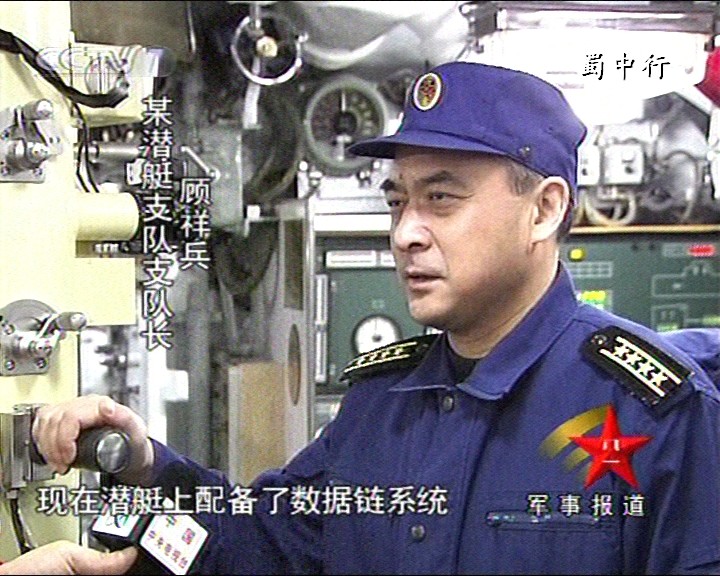 In the TV news story, a submarine captain from the 12th submarine detachment of PLA Navy Northern fleet introduced that Ming class submarine has used datalink system.
In the TV news story, a submarine captain from the 12th submarine detachment of PLA Navy Northern fleet introduced that Ming class submarine has used datalink system.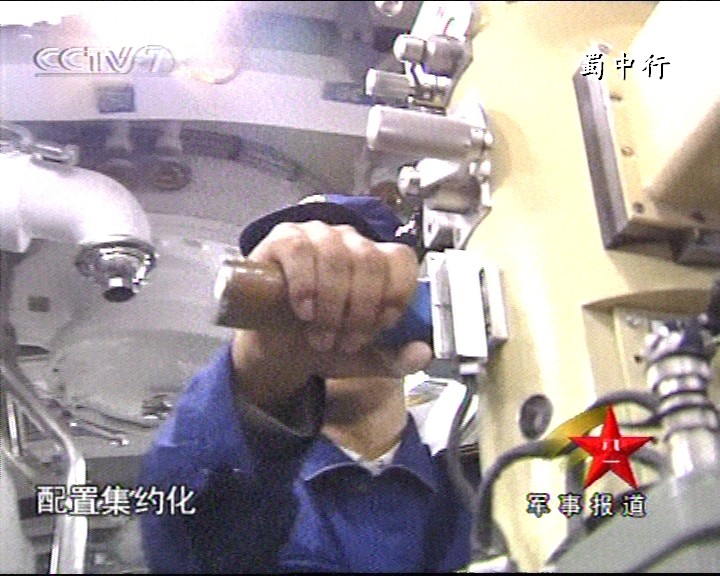 Ming Class Conventional Submarine inside structure
Ming Class Conventional Submarine inside structure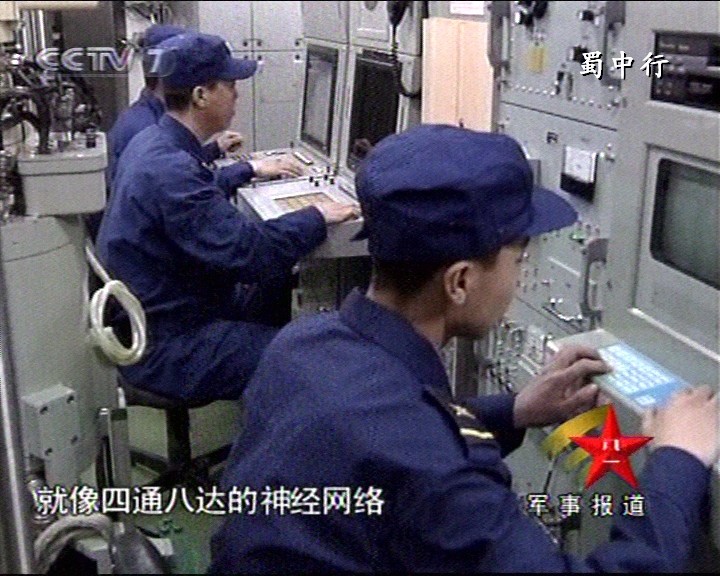 Ming Class Conventional Submarine inside structure
Ming Class Conventional Submarine inside structure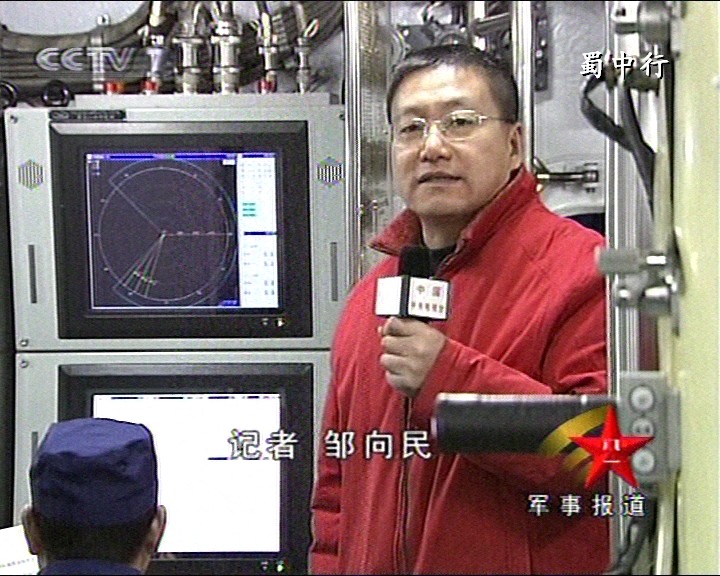 Ming Class Conventional Submarine inside structure
Ming Class Conventional Submarine inside structure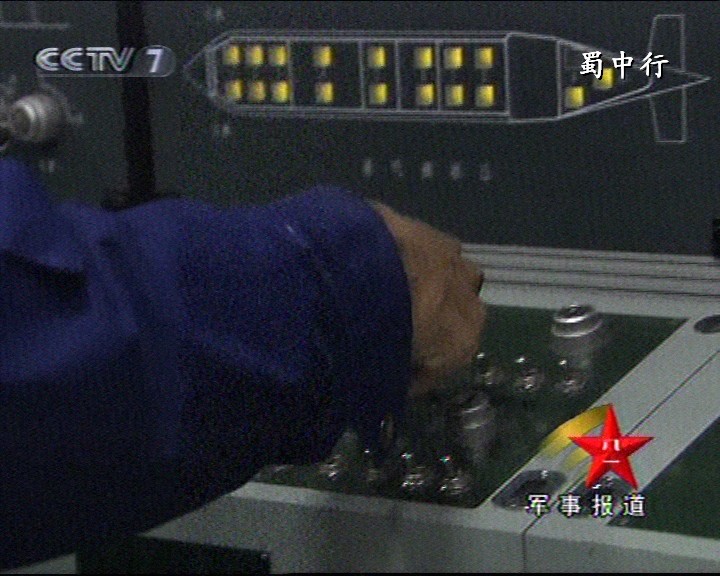 Ming Class Conventional Submarine control panel
Ming Class Conventional Submarine control panel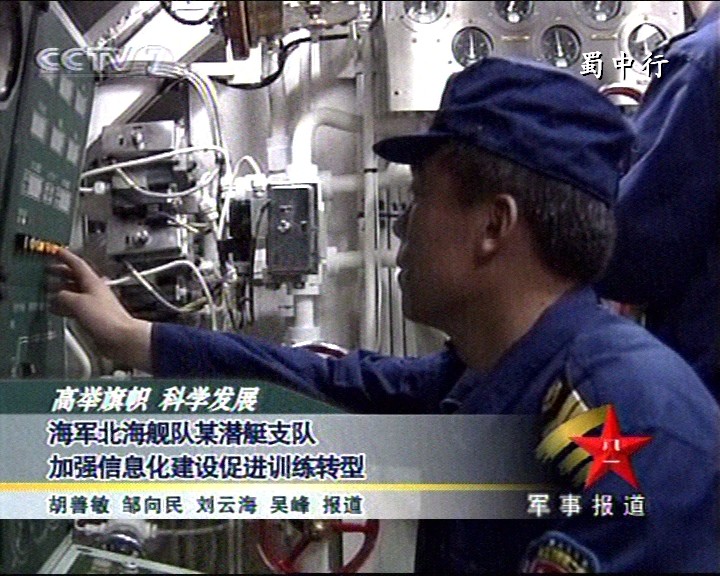 Class Conventional Submarine control panel
Class Conventional Submarine control panel Class Conventional Submarine control panel
Class Conventional Submarine control panel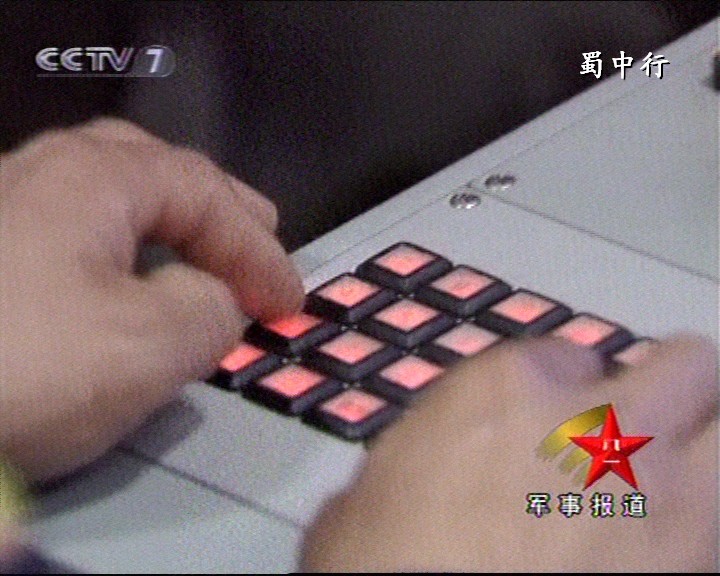 Class Conventional Submarine control panel
Class Conventional Submarine control panel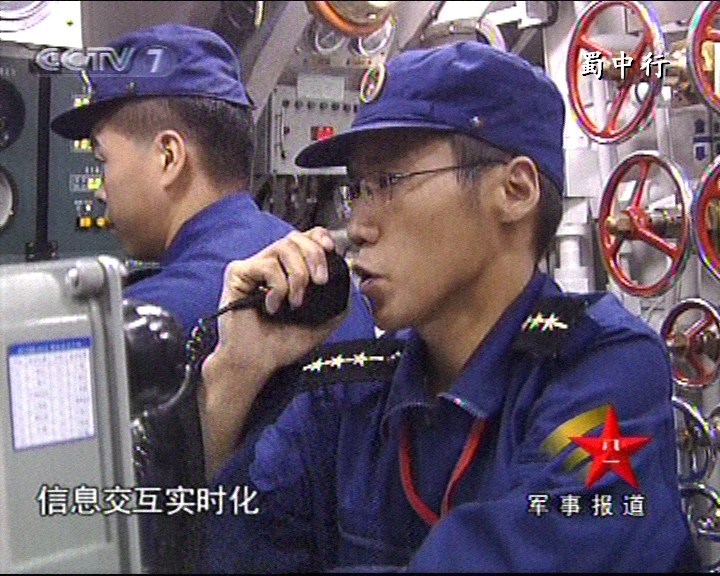
submarine staff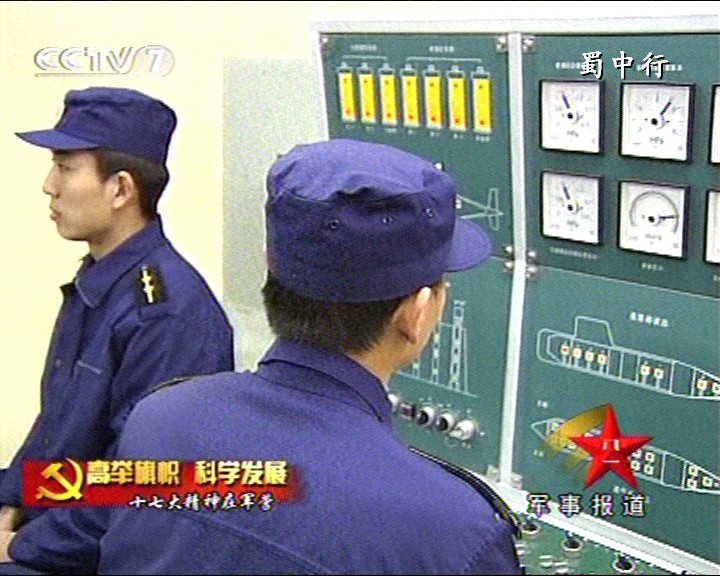 Training simulator for Ming Class Submarine
Training simulator for Ming Class Submarine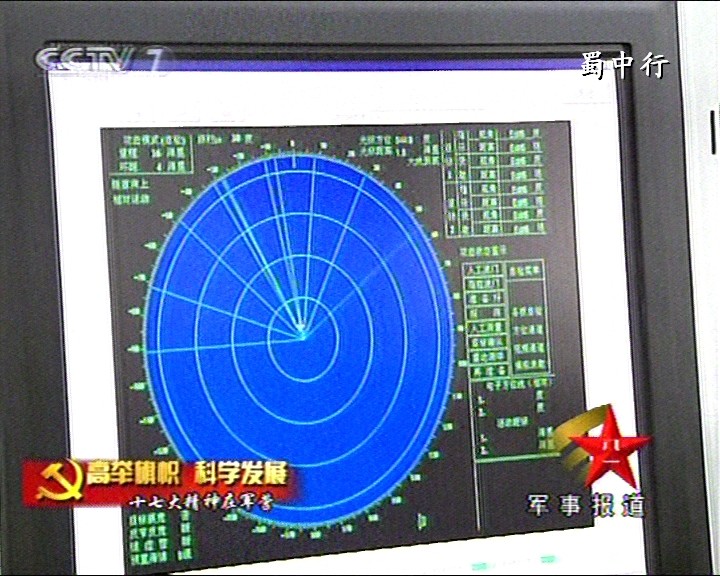 Training simulator for Ming Class Submarine
Training simulator for Ming Class Submarine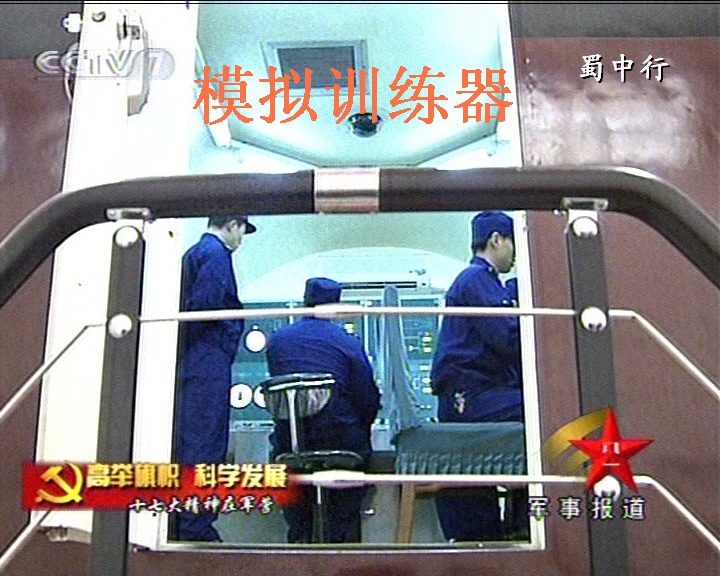
Training simulator for Ming Class Submarine
Friday, January 11, 2008
China release VN-3 4×4 muilti-purpose wheel armor vehicle
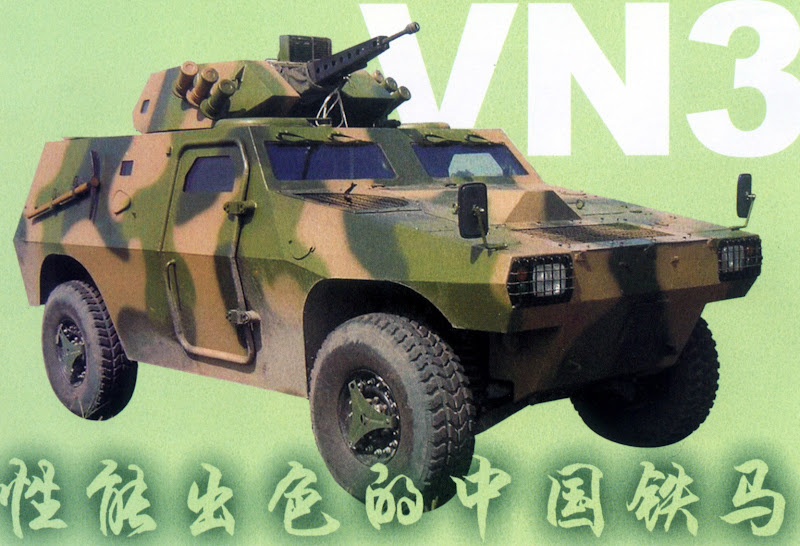
The vehicle's main armament is PLA's new type-02 14.5mm heavy machine gun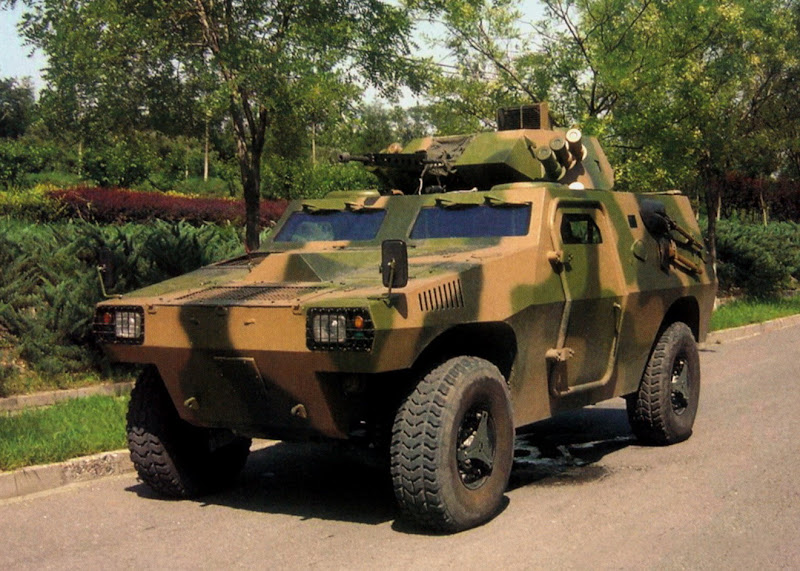

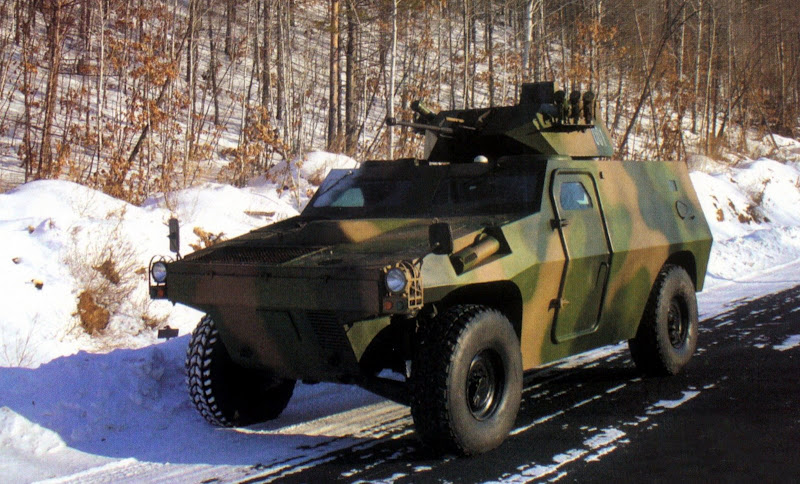
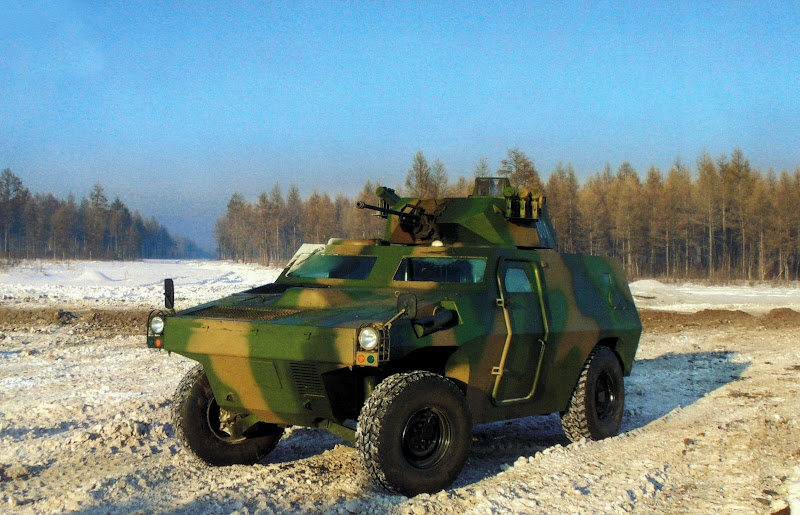
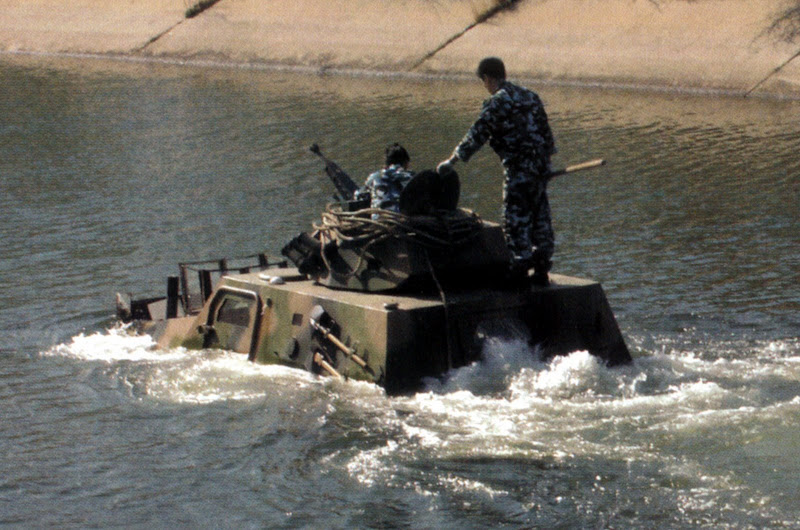
a test in water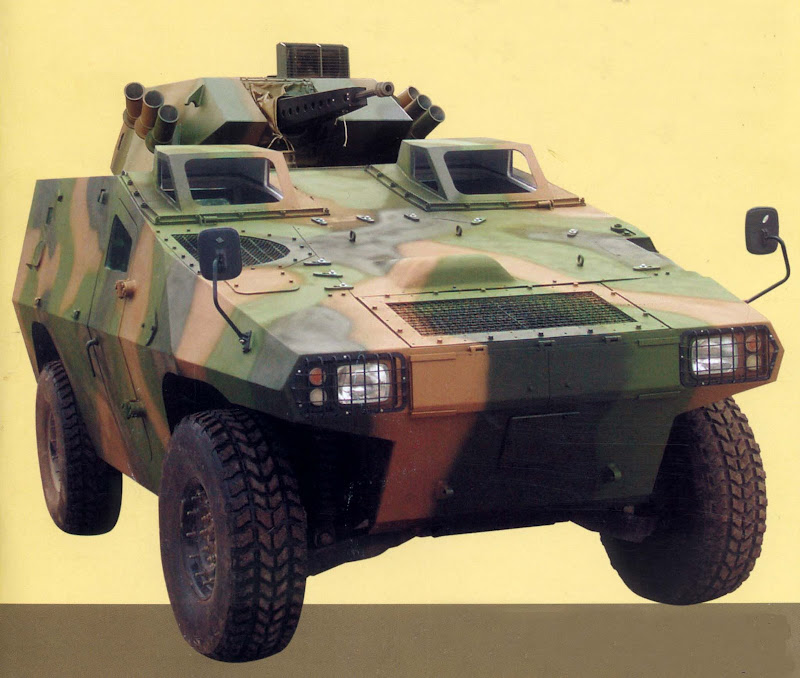
a variant of VN-3 vehicle